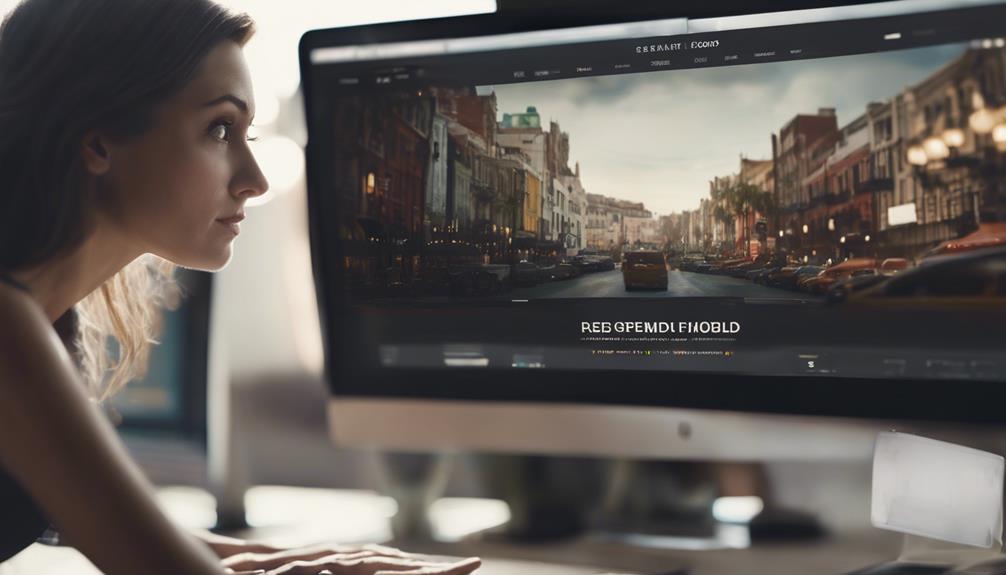When installing your website, create a sitemap for structure. Think about your audience and design. Choose a domain name that reflects your brand. Pick the right hosting platform. Guarantee mobile-friendliness in design. These 5 tips will help your website installation go smoothly.
Planning Your Website Installation
To begin planning your website installation, outline the structure and navigation by creating a sitemap. This essential tool will help you visualize how different pages connect and prioritize content for a seamless user experience.
Consider your target audience and design elements while structuring the site to guarantee it resonates with visitors. Selecting a custom domain name that reflects your brand identity is vital for establishing a professional online presence.
When choosing a hosting platform, evaluate your website's needs to find the best fit. Additionally, prioritize mobile optimization to reach a broader audience, as more users access websites through their smartphones. Incorporate responsive design elements to guarantee your site looks and functions well on various devices.
Develop a clear navigation plan to guide visitors through your website effortlessly. A well-thought-out navigation structure can enhance user experience and encourage visitors to explore more of your content.
Audience Targeting and Content
When planning your website installation, understanding your target audience and creating tailored content are key components for engaging visitors effectively. Start by identifying your target audience based on demographics, interests, and online behavior. This will help you tailor your content strategy to meet their specific needs and preferences.
To keep your audience engaged, focus on creating valuable and engaging content that resonates with them. Use a font that's easy to read and maintain a consistent tone throughout your website to establish a cohesive brand identity.
Incorporating multimedia elements such as images, videos, and infographics can enhance user engagement and make your content more visually appealing. Additionally, regularly analyze audience feedback and website analytics to refine your content strategy.
Branding and Logo Design

Craft a unique logo that embodies your brand's identity and distinguishes you from competitors. Your logo should be scalable, ensuring it looks great across various platforms and sizes.
Opt for a design with a transparent background to seamlessly blend with your website layout. It's essential to create a logo that's easily recognizable and memorable, leaving a lasting impression on your visitors.
Consistency in branding elements such as colors, fonts, and logo placement is vital to establish a cohesive and professional look for your website. By maintaining a unified design approach, you reinforce your brand identity and build trust with your audience.
A well-thought-out logo not only enhances the visual appeal of your site but also serves as a symbol of your brand's values and mission. Invest time and effort into crafting a logo that reflects your brand's essence and resonates with your target audience for a strong online presence.
Domain Name Selection
Consider choosing a domain name that aligns with your brand's identity and is easy for users to remember. Your domain name is a vital aspect of your online presence, so it should mirror your brand identity and resonate with your audience.
Including relevant keywords in your domain name can also enhance your website's SEO and help potential visitors find you more easily. When picking a domain name, opt for a reputable registrar for registration and management to guarantee a smooth process.
Check the availability of your desired domain name across different extensions like .com, .net, or .org, and secure it promptly to prevent others from registering it.
Mobile Responsiveness and Design

To ensure a smooth user experience and enhance your website's visibility, prioritize mobile adaptability and design.
With over 50% of internet users accessing websites from mobile devices, ensuring your website is mobile-friendly is essential. Utilize responsive design techniques to adjust your layout for ideal viewing on different devices.
Test your site on various devices and screen sizes to verify a seamless user experience. Incorporate mobile-friendly features such as simple navigation, large clickable buttons, and quick loading times to boost user engagement.
Conclusion
To sum up, by following these 5 best tips for installing your website, you can set yourself up for success in the online world.
Remember, Rome wasn't built in a day, so take your time and carefully plan out every aspect of your website installation.
Just like a well-oiled machine, your website will run smoothly and attract the right audience if you put in the effort upfront.
Happy installing!



